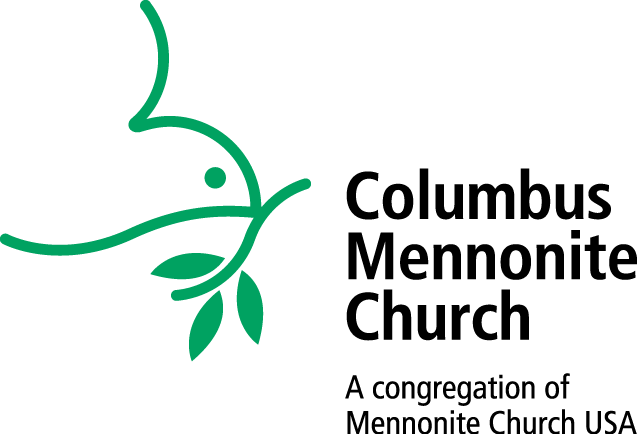Text: Luke 24:1-12
Speaker: Joel Miller
When I say Christ is Risen you say Christ is Risen Indeed.
Christ is Risen.
Christ is Risen
The writer Anne Lamott was once asked how the meaning of Easter has changed for her. As might be expected, of a writer, she wrote out her answer. It’s a story from her life, in the form of a poem. This is how it goes:
When I was 38,
my best friend, Pammy,
died, and we went shopping
about two weeks before she died,
and she was in a wig
and a wheelchair.
I was buying a dress
for this boyfriend I was trying to impress,
and I bought a tighter,
shorter dress than I was used to.
And I said to her,
“Do you think this makes my hips look big?”
and she said to me, so calmly,
“Anne, you don’t have that kind of time.”
And I think Easter has been about
the resonance of that simple statement;
and that when I stop,
when I go into contemplation and meditation,
when I breathe again and do the sacred action
of plopping and hanging my head
and being done with my own agenda,
I hear that, ‘You don’t have that kind of time,’
you have time only to cultivate presence
and authenticity and service,
praying against all odds
to get your sense of humor back.
That’s how it has changed for me.
That was the day my life changed,
when she said that to me.
The words of Anne Lamott.
It’s not hard to imagine a similar scenario with the same kind of shopping trip, the same dress purchased, the same question asked, even the same response given – you don’t have that kind of time – but not registering as one of those life-changing moments.
I think it’s no coincidence that “the day my life changed” as Anne Lamott puts it, happened at the edge of life and death. This wasn’t just any other day. It was an outing with a friend who knew she had very little time left. And Anne knew it too. Knowing that, and being powerless to stop death, they decide to spend a day together, while there are still days to be together. Just two weeks, it turned out.
Anne’s friend accompanies her. Anne accompanies her friend, and, perhaps unknowingly, positions herself to hear in a way she’s never heard before. Right there at the edge of death and life. When you are in the presence of something precious, something or someone about to disappear, life has a way of becoming clearer. And so does time.
If you read the four gospel accounts of the empty tomb, there are surprising amounts of differences in the details. Was the stone already rolled away when the women got there (Mark, Luke, and John), or did they watch it being rolled away by an angel (Matthew)? Did they meet one angel sitting on the stone (Matthew), a young man inside the tomb (Mark), two men standing beside them outside the tomb (Luke), or two angels sitting where Jesus had been lying (John)? Do the women flee and tell no one what they’ve seen (Mark), or rush to tell the others (Matthew, Luke, and John)? Do they meet the risen Jesus as they are leaving? Yes in Matthew and John, No in Luke and Mark. And how many women were there? One? (John) Two? (Matthew) Three? (Mark) or We’re not quite sure, but definitely more than three. Luke 24:10: “Now it was Mary Magdalene, Joanna, Mary the mother of James, and the other women with them who told this to the apostles.”
One thing they do all agree on as they tell about that first day of the week, early in the morning, is that the women who were the first witnesses of resurrection, were the same women who witnessed the crucifixion. The first to proclaim Jesus being raised up were the last ones standing when he was executed by the state. In other words, it was those who accompanied Jesus to the edge of death, who were the first to hear and see the depth, and breadth, and unanticipated eruption of life that is resurrection.
Let’s say this is not a coincidence. Let’s imagine it’s not an accident that the gospel writers, who are clearly not comparing notes to come up with a definitive account, agree on this point. There’s something about being at that edge, that opens one up to being changed.
When you’ve walked to that edge, watch out. Words that may otherwise be shrugged off or quickly forgotten take on a depth of meaning that’s hard to escape. For these women at the empty tomb, this came in the form of these short phrases, spoken by the angels, or men, or illuminated beings, or whatever they may have been. In hearing them, the women are never quite the same.
Phrases like “Do not be afraid.”
And “Why do you look for the living among the dead?”
And “He is not here”
I’m struck by how nonspecific these words are. It’s mostly what not to do, or where not to look for what you think you’re looking for.
Kind of like Anne Lamott’s friend Pammy who said “Anne, you don’t have that kind of time.” She doesn’t say what kind of time she does have. Just that when one is present to life in the way Pammy was in her final days, one doesn’t have time to dwell on every thought and concern that occupies the mind. So Anne is confronted with the beautiful and haunting question of what is time actually for?
The words of the angels to the women at the empty tomb have this same effect. What would it be like to live within time without fear as the primary motive? Do not be afraid. Or what if our grief for all we’ve lost is less like a sealed burial plot and more like an empty tomb with the stone rolled away, with messengers all around? “Why do you look for the living among the dead?”
And if “he is not here,” where else might he be? What if Christ is everywhere else besides that tomb, and what if time is now the landscape in which Christ “Plays in ten thousand places,” as another poet, Gerald Manley Hopkins, has said.
If we don’t have that kind of time to be stuck in fear or looking for life in all the wrong places, what do we have time for?
What if Easter is our annual pilgrimage to the edge of death and life? Whether we want to be there or not, here we are. There are precious things around us coming to an end. Maybe a stage of life coming to a close, Maybe a political ideal being trampled. Maybe an actual person you are accompanying toward death.
And what if Easter asks us to consider that it is also the small, narrow scope of our own vision that’s coming to an end.
And then, right there at the edge, like those women at the tomb, like Anne in the mall, we are confronted with the impossible possibility of resurrection. Time opens up in front of us like a spacious field.
What if, as Anne Lamott suggests, we suddenly realize that the gift of time is to cultivate presence, and authenticity and service, praying against all odds to get your sense of humor back. Please let there be some humor.
What if, as Jesus taught, the greatest commandment is to love God with all our being and to love our neighbor as ourself, and that is enough to last a lifetime.
And what if, as all the gospels proclaim, Jesus, crucified and risen, is radiantly among us in a way that no Roman cross or tomb can ever contain.
Christ is risen. Christ plays in the ten thousand places. And time? Time is for living within the astonishing reality of resurrection.

